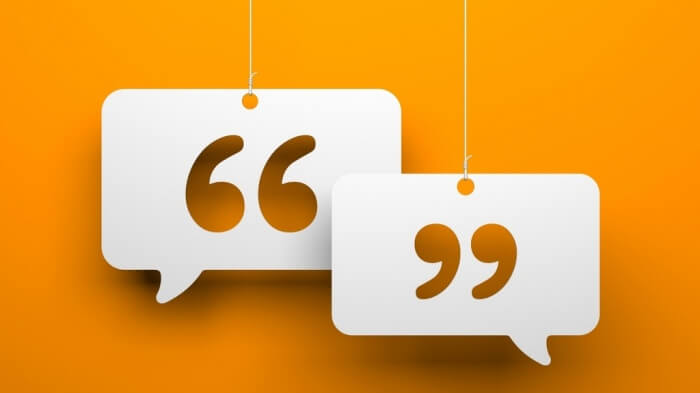How To Turn Your Customers Into Your Salesforce
How can brands turn social media activity into a fruitful sales channel?

Social media has transformed the way in which people and brands interact over the past decade. Social has grown in popularity at a phenomenal rate to the point that if Facebook were a country, it would be the third largest one on the planet today, smaller only than China and India in terms of population.
It carries more traffic than Google in the United States, almost 50% of the mobile internet traffic in the UK and has already changed business, society and even politics.
As it now carries such influence, social media is also an important consideration for companies who want to keep control of their brand reputation. It not only provides an opportunity to generate interest in their products and services, but also comes with an element of risk.
Since 90% of consumers today trust peer recommendations and only 14% trust your painstakingly developed advertising, this puts substantial power into the hands of the people you’re trying to reach. Combine that preference for peer recommendations with the vast number of people on Facebook and you have to ask yourself: are you happy with what they are saying about you?
There was a time when brands controlled their marketing messages… but not anymore. Your marketing is being done for you, around the clock, whether you are watching or not. That makes it a very exciting and dynamic world from a marketing perspective. How will you make it work for you?
The “Buying Zone” and four states of mind
One of the main responsibilities of any marketing function is to generate awareness and leads - more importantly the right type of leads. The Customer Buying Zone identifies four states of mind a potential customer will move through en route to making a purchasing decision.
It guides you to cultivate a loyal follower who turns into your loyal customer who ultimately becomes your sales force. And it all starts at the top of the marketing funnel….
#One: Unconscious state of mind
Your potential customer is unaware there is a risk or opportunity on the horizon. As a consequence, they are oblivious to the potential need for a solution and, more importantly, may be oblivious to your solution. This is your opportunity to raise awareness, educate and create brand buzz.
Your goal is to move them from state of mind one to two – conscious curiosity. How? Thought leadership and rich, quality content. Position your organization / your leader(s) as experts in your field – a trusted brand who knows their stuff. Maximize your inbound efforts; email, social media, blog posts, SEO. Share freely your content and content of others.
#Two: Conscious curiosity
Your potential customer is now consciously curious. They are aware of the risk or opportunity on the horizon and are becoming increasingly aware of possible solutions. They may be aware of your product or service (or may not!) and those of your competitors. However, they may be unclear or unconvinced as to why your solution is what they need.
They will undertake research to understand the solutions available and will reach out to others for opinions or guidance. This part is key and can be a deal breaker even before there is a sale to be had.
So imagine the scenario: a potential customer you don’t even know exists has started to research your business and what you offer. They may go immediately online and view your website, your social media sites, and anything else interesting they can find. They may speak with their friends.
Now what are they starting to do? They are forming an opinion and brand perception of your business, your product, and your service.
Clearly this can go one of two ways and you don’t need me to illustrate it here. The key point is this: how confident are you that the interactions your potential customers are having with your brand are moving them positively into the next state of mind, conscious intent? How can you counteract any negative opinions which may have been formed along the way and ensure your status as provider/partner of choice?
Utilise blogging, guest bloggers, testimonials, endorsements, existing customer case studies. Convey the message you want to be heard, endorsed by others. Add value by exposing your potential customers to new experiences and insights. Provide opportunities for positive reinforcement of your brand.
#Three: Conscious intent
Your potential customer is now informed about the options available to them. They are aware of you, your competitors, and have started to identify preferred providers and solutions. However, they are still unconvinced as to why they should choose you over your competition.
This is your opportunity to shine, to WOW. In a succinct sentence explain your proposition and why they should choose you. Tailor your message to your audience and channel. Make the potential customer feel as if you are talking to them directly, solve their problems with what you offer. Talk benefit statements not product features all day long.
#Four: Conscious necessity
Your potential customer is now fully informed, actively seeking to buy, and looking for reasons why they shouldn’t buy from you, a state known as buyer’s remorse. Don’t give them one. Instead give them confidence and assurances and reinforce with action.
Deliver on your promises and continue to add value.
Thinking about this strategy from a different perspective, and you can turn your customers into your sales force. An army of raving fans out there every day talking up you and your business and why people should buy from you.
Royston Guest is author of Built to Grow.
Thanks for signing up to Minutehack alerts.
Brilliant editorials heading your way soon.
Okay, Thanks!




